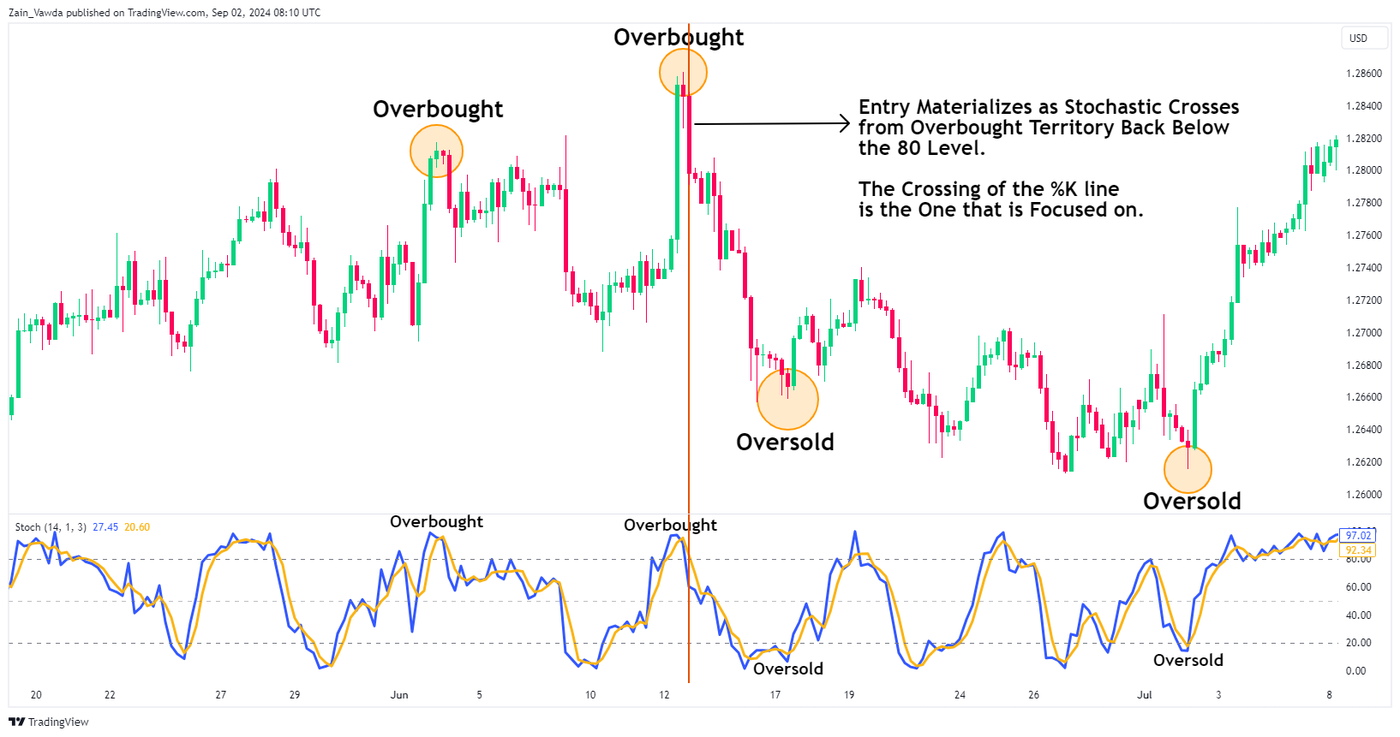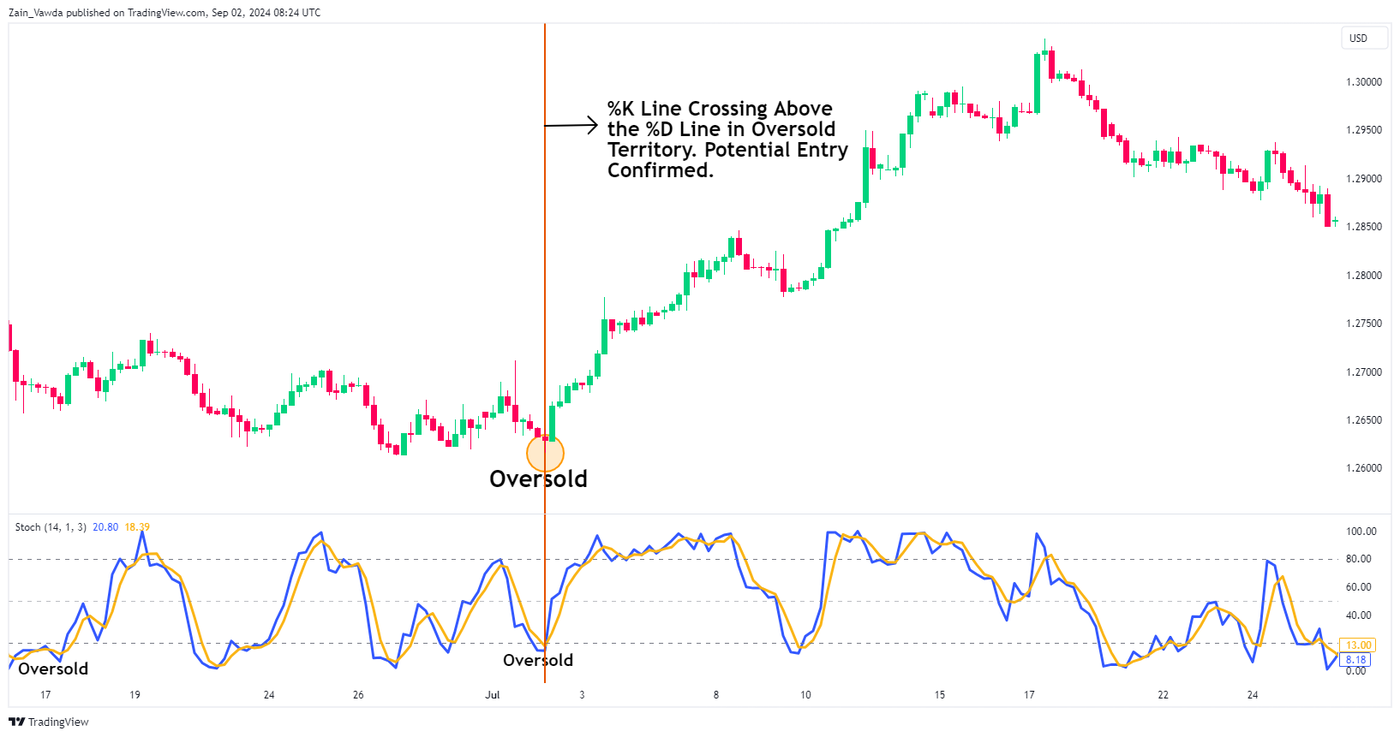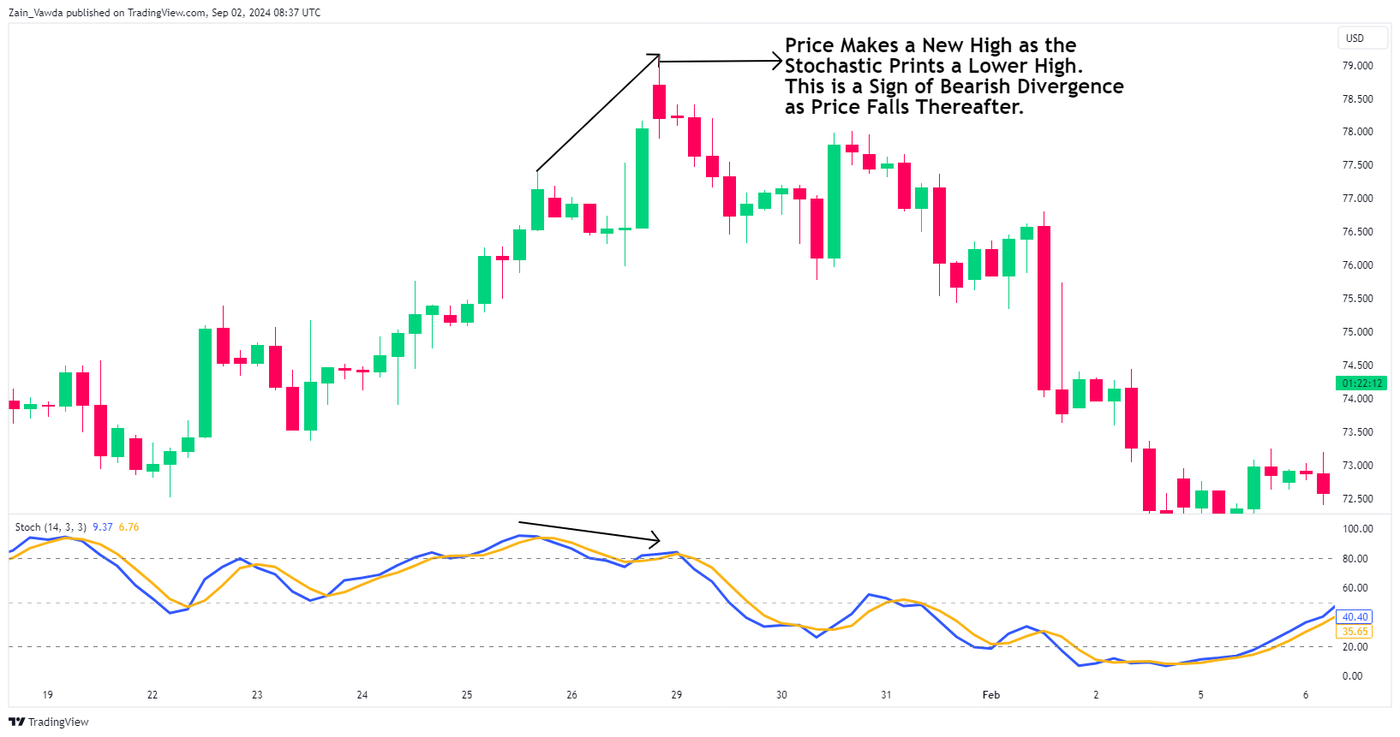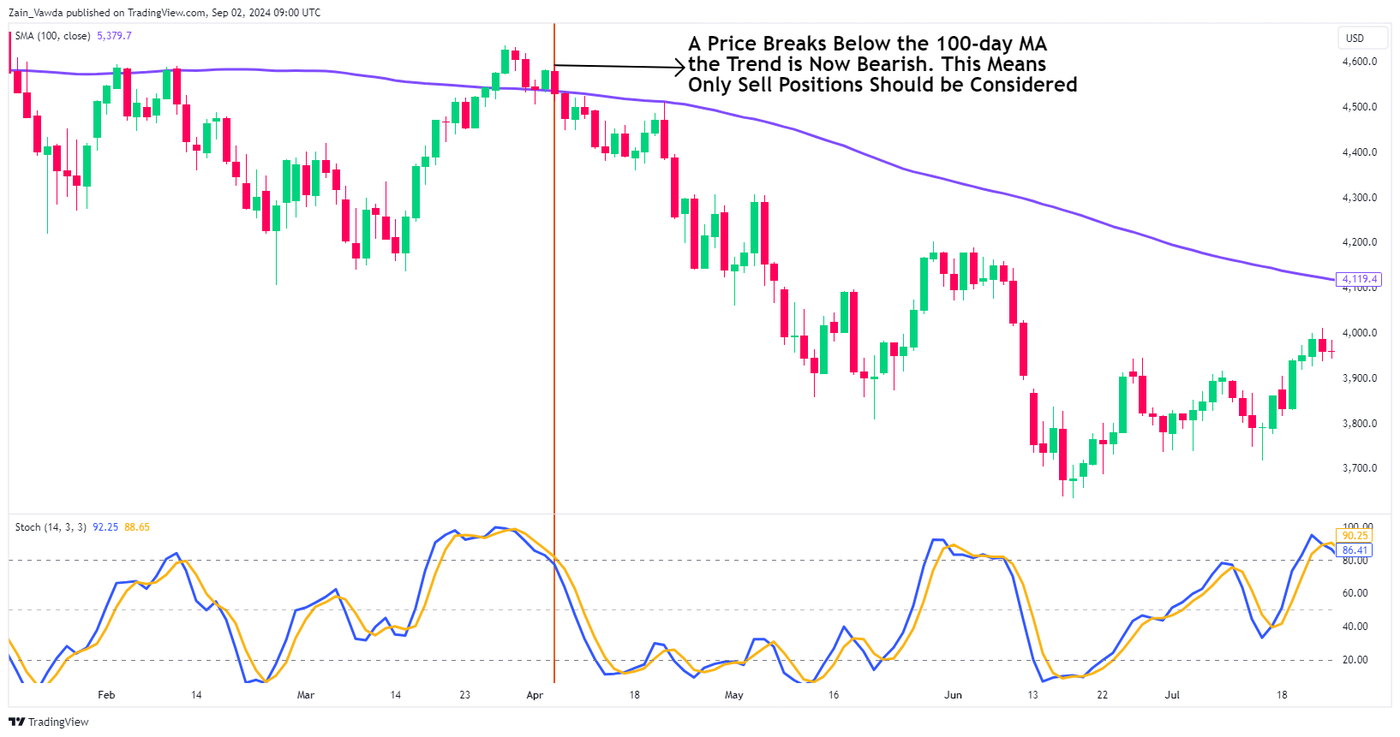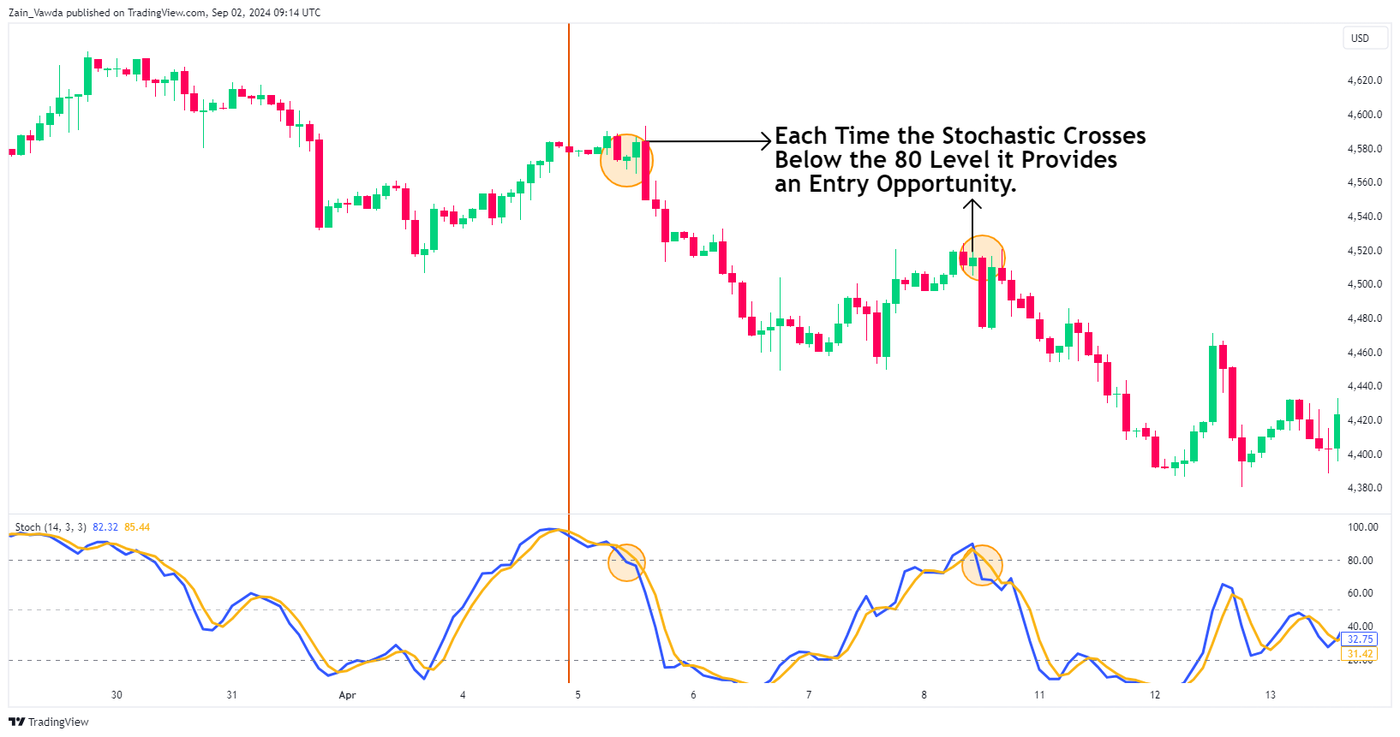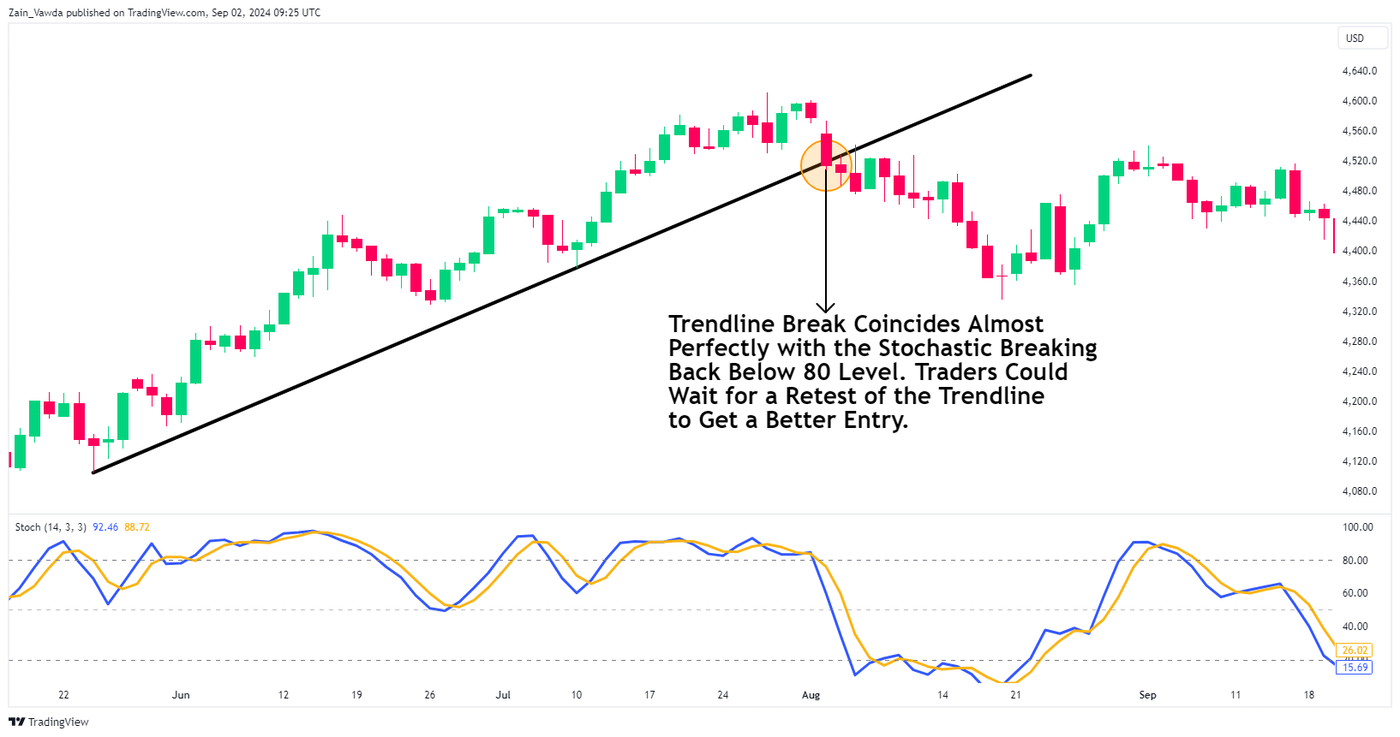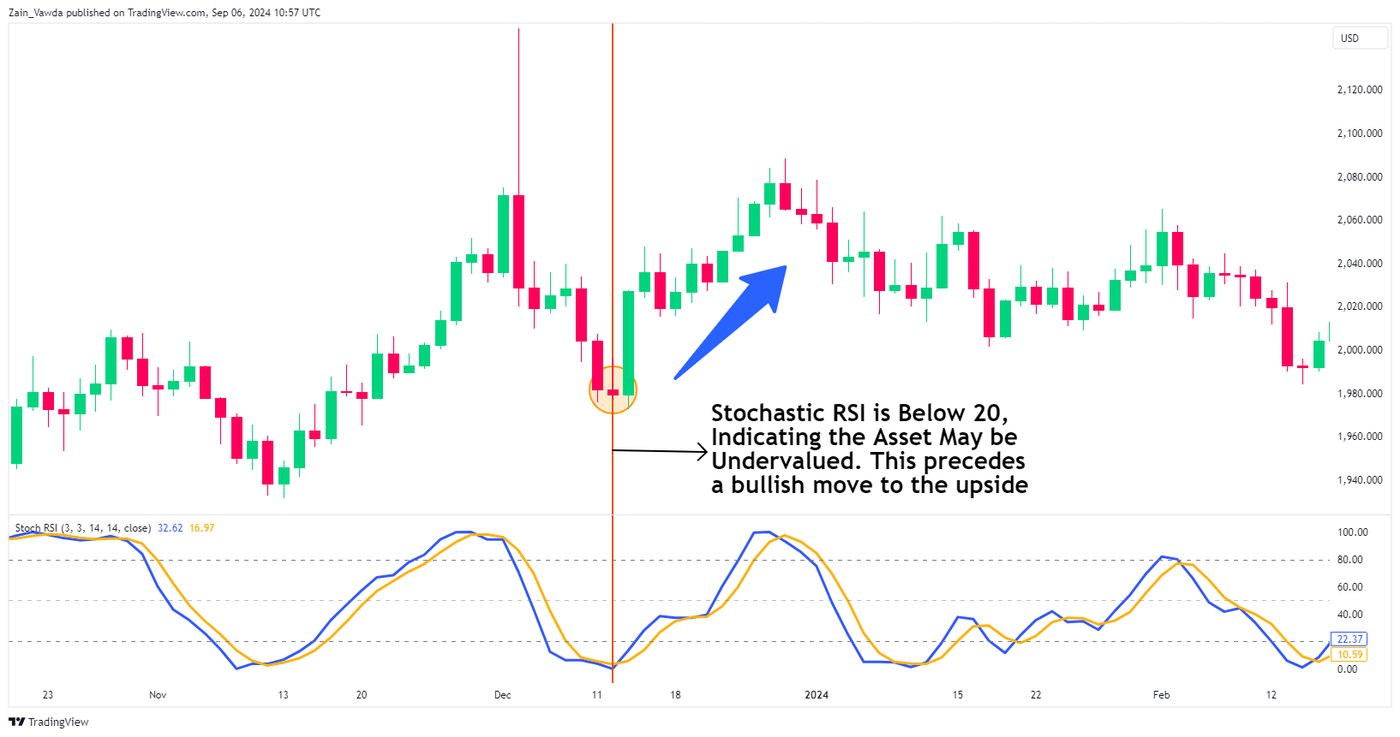Explore practical stochastic oscillator strategies and learn how to combine these techniques with other tools for informed trading decisions.
In the dynamic world of trading, where trends can shift in the blink of an eye, the stochastic oscillator emerges as a trusted ally for traders.
Building upon the foundational knowledge established in "Spotting Trend Reversals Using the Stochastic Oscillator", this article explores practical trading strategies that harness the power of the stochastic oscillator.
By understanding how to interpret its signals and combine them with other technical analysis tools, traders can gain a deeper insight into market dynamics and make more informed trading decisions.
Stochastic Oscillator Trading Strategies
As with most indicators, the stochastic oscillator may be used in various trading strategies. However, it delivers the best results when it is combined with other indicators or price action. Below, we look at four trading strategies that traders can implement using the stochastic oscillator.
Stochastic Overbought vs Oversold Strategy
The stochastic overbought vs. oversold strategy is easy to understand and use. With settings at 20, 50, and 80, a reading above 80 means the asset might be overpriced. A reading below 20 suggests the asset might be undervalued and could rise in price soon. The important thing is that a potential entry point happens when the stochastic drops below 80, indicating a possible change in momentum from going up to going down. Conversely, when the stochastic moves from below 20 to above the 20 mark, this is a sign that momentum may be shifting from sellers to buyers. The example below shows the GBP/USD H4 chart and a potential sell setup as the %K line crosses back below the 80 mark from overbought territory.
Traders may look to enter a buy trade when the %K line crosses above the 20 threshold after being in oversold territory. The stop loss should ideally be placed either below the most recent low, with a take profit at the next level of resistance near your desired risk-to reward-ratio.
The opposite is true when considering selling opportunities, with the stop loss placed above the recent swing high and a take profit level near the next level of support.
Stochastic Crossover
In light of the recent Olympics, the stochastic crossover strategy is like watching two 100m sprinters, %K and %D. When %K (the faster sprinter) passes %D (the slower sprinter), it’s a sign that it might be a good time to buy. But when %K falls behind %D, it’s a hint that it might be a good time to sell.
This approach is most effective in trending markets rather than in markets that are moving sideways. In an uptrend, the stochastic lines typically stay above the 50 level. Conversely, in a downtrend, the stochastic oscillator tends to remain below 50. In such trending markets, traders do not have to wait for the stochastic to enter oversold/overbought territory. A simple %K cross above %D would signal a buying opportunity.
In the example above, however, we get both, as the crossover appears as the instrument remains in oversold territory. The vertical line shows when the crossover takes place, and that is the signal that an entry has materialized and a potential trade may be taken.
Bull/Bear Divergence Strategy
The stochastic divergence strategy involves traders analyzing the relationship between the movement of the asset’s price and the stochastic oscillator. When the asset's price reaches higher highs while the oscillator registers lower highs, it indicates a bearish divergence. This pattern suggests that the price may soon decline.
Alternatively, a bullish divergence occurs when the price is making lower lows, but the oscillator is making higher lows, indicating a possible price rise. This strategy helps traders spot potential trend reversals early.
When applying the stochastic divergence strategy, appropriately setting stop loss and take profit levels is crucial. For a bullish divergence, it is advisable to place the stop loss slightly below the latest swing low. Take profit levels can be adjusted based on the trader's strategy, often positioned near a previous swing high. If aiming for a 1:1 risk-to-reward ratio, traders might opt to exit their position once this target is achieved.
A prime example of bearish divergence is illustrated in the chart below, where the price forms a new high while the stochastic indicator registers a lower high. This often precedes a selloff and a trend reversal. In such a scenario, the stop loss should be set above the recent high, while the take profit can be targeted at the latest support level or when the stochastic reaches oversold conditions.
Stochastic Oscillator with Moving Averages
Combining the stochastic indicator with moving averages, a widely popular tool, offers an intriguing strategy. Here, moving averages help outline the long-term trend and key levels of support and resistance. This can be leveraged as a multi-timeframe analysis, where the moving average identifies the broader trend.
Once the long-term trend is established, traders can switch to a shorter time frame to find potential entry points using the stochastic oscillator.
To effectively use this strategy, it’s essential to trade in line with the direction indicated by the moving averages. Here's a more detailed look at the strategy and multi-timeframe analysis:
Step 1: Determine the trend direction on the daily chart by adding a 100-period moving average. If the price is above the 100-day SMA, the trend is upward. Conversely, if the price is below the 100-day SMA, the trend is downward.
Step 2: Switch to a 2-hour chart (you could use a 1-hour or 30 min as well). Screen your stochastic signals to ensure they align with the daily trend direction established in step 1 (downtrend, only look for sell opportunities in the example above).
If the daily trend is upward, focus solely on buy signals where the stochastic crosses above the 20 level. Conversely, if the daily trend is downward, only consider sell signals when the stochastic drops below the 80 level.
As you can see on the 2-hour chart below, each time the stochastic crosses below the 80 level, it presents the opportunity for a short position.
Stochastic Oscillator with Trendline
Stochastic divergences or reversals can be effectively paired with trendlines and price action signals in trading. Once a distinct trendline is identified, a signal is generated when the trendline is broken. If the stochastic indicator also confirms this trendline break, it provides a strong signal.
The chart example above provides a perfect example, as the stochastic crosses back below 80 around the same time as the trendline break occurs. Now, it is crucial to remember that at times the setup may not be perfect, meaning you could get the trendline break ahead of the stochastic crossing back below the 80 level.
Conversely, you could also get a stochastic crossing back below 80 ahead of a trendline break. This does not invalidate the setup but rather just a slightly different one.
Stochastic Oscillator with RSI
A popular tool is the Stochastic RSI, which combines the stochastic indicator with the Relative Strength Index (RSI). It's used to identify when an asset's price might be too high (overbought) or too low (oversold), signaling potential buy or sell opportunities. If the stochastic RSI is above 80, the asset might be too expensive. If it's below 20, it might be a bargain.
The chart shows the stochastic RSI dropping below 20, suggesting the asset might be undervalued and could soon bounce back. To confirm a good time to buy, traders might also want to use price action or candlestick patterns. An extra form of confirmation can be beneficial.
One issue with the stochastic RSI is that it analyzes RSI values instead of actual prices. This can be problematic for traders who focus on price movements, as price is the main focus in trading. Indicators like the stochastic RSI are meant to assist, not replace, the importance of price.
Find out what Stochastic strategy works best for you with OANDA
Interested in day-trading or swing trading the dollar and other currency pairs?
Apply the knowledge gained from this strategy guide to optimize your usage of the stochastic indicator and put it to the test.
Apply for a demo forex account at oanda.com and get testing.
This article is for general information purposes only, not to be considered a recommendation or financial advice. Past performance is not indicative of future results.
Opinions are the author's; not necessarily that of OANDA Corporation or any of its affiliates, subsidiaries, officers or directors.
Leveraged trading in foreign currency contracts or other off-exchange products on margin carries a high level of risk and is not suitable for everyone. We advise you to carefully consider whether trading is appropriate for you in light of your personal circumstances. You may lose more than you invest. We recommend that you seek independent financial advice and ensure you fully understand the risks involved before trading.



